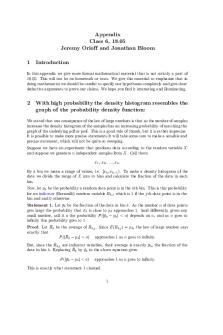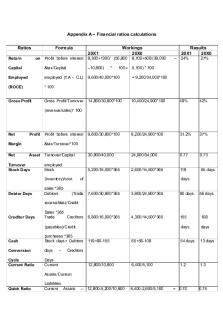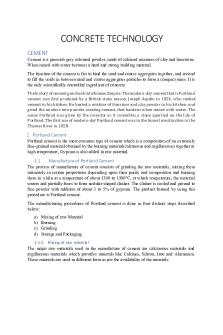Tutorial 1 Appendix Sec7.9 Orthonormal Basis and Gram-Schmidt Process PDF

| Title | Tutorial 1 Appendix Sec7.9 Orthonormal Basis and Gram-Schmidt Process |
|---|---|
| Author | yu cao |
| Course | Applied Linear Algebra |
| Institution | Simon Fraser University |
| Pages | 5 |
| File Size | 474.4 KB |
| File Type | |
| Total Downloads | 70 |
| Total Views | 119 |
Summary
Lecture note Sec7.9 Orthonormal Basis and Gram-Schmidt Process...
Description
Tutorial 1 Appendix: Variables, Data Visualization Types and Examples Variables Independent variables: the parameters/factors that are controlled or ‘manipulated’ by the researcher. The variation in these variables is known before research begins, since the point is to see whether they influence results. They are not influenced by other variables. The 'manipulation' is how these variables are used to assess how they impact the dependent variable. Often in environmental science, the independent variable is time. Dependent variables: the parameters/factors that 'respond' to the independent variable. The response of these variables is not known before research begins, since the point is to see if this variable is ‘dependent upon’ the independent variable, i.e. when we change the independent variable, does the dependent variable change? All variables need units to have meaning, and are expressed as "variable (unit)". e.g. Time (years). Understanding the kind of variable, and how it is measured and expressed, are important to understanding graphical data.
Data Visualization Types Data: a set of values of qualitative or quantitative variables. Data is measured, collected, analyzed and synthesized into a coherent form, so that it can be visualized using tables and graphs. The format used to visualize data must suit the type of data. Tables: Visualization of data in a table is good for displaying exact values, but poor for understanding the underlying patterns in the data. e.g. Table A1. Estimates of the total tree number for each of the biomes that contain forested land
1
Graphs (Charts): Graphs are visual representations of data, that condense and organize large amounts of information, are easier to interpret than raw data or data in a table, and can show relationships, patterns, and trends in data.
Types of Graphs/Charts: Scatter Plots and Line Graphs: Both are used to map quantitative data points that arise from the interaction of two variables, using horizontal and vertical axes. Each mark (usually a dot or small circle), represents a single data point. Both are useful for showing changes over time. •
Scatter Plots: Individual data points are not connected directly together with a line, but a trend line through the data points can (and usually is) used. Scatter plots are useful for determining whether there is a relationship (correlation) between variables, and how strong or directional that relationship is. The slope and direction of the trend line indicates whether the relationship is positive (an increase in one variable is associated with an increase in the other) or negative (an increase in one variable occurs with a decrease in the other). Scatter plots can be used when x-values have multiple y-values.
e.g. Figure A1: Waiting Time between Old Faithful Eruptions vs. Duration of Eruption
2
•
Line Graphs: As with scatter plots, individual data values are recorded as marks on the graph, and an overall trend can still be seen, but a line is used to connect the data points. This helps visualize the 'local' rate of change (trend) between each two nearest points. This can only be done if x-values have single yvalues, and the x values are of a type and frequency/interval that can reasonably be assumed to be somewhat continuous in nature.
e.g. Figure A2: Monthly Arctic sea ice extent vs. time Bar Graph (column chart, histogram): A bar chart uses bars to show comparisons between categories of data. Bars are most often vertical, with independent variable on x axis. The height of each bar represents an amount or number, giving a quick visual sense of relative magnitude. Bars can also be horizontal, so that the x-axis now displays the dependent variable.
e.g. Figure A3: Bacteria identified in creek and forest biomes
3
Area Graph: This is a type of modified line graph that combines the benefits of both line and bar graphs. Multiple line graphs are plotted stacked on top of each other, and the areas between the lines are filled in with different colours, like ribbons. Instead of reading the magnitude of each dependent variable via the total vertical distance along the y axis, the width of each ‘ribbon’ indicates magnitude. This gives a quick and visually clear sense of relative magnitudes.
e.g. Figure A4. Insecticide use on different crops, 1993-2012 Pie Charts: Used when the categories represent all subsets of a whole (e.g. they need to amount to the whole pie!). The advantage to pie charts is that the size of each group can be visually compared to each other easily.
e.g. Figure A5. Annual Greenhouse Gas Emissions by Sector
4
Choropleth Maps: a map that uses differences in shading, coloring, or the placing of symbols within predefined areas to indicate the average values of a property or quantity in those areas. The advantage of choropleth maps is that you can readily see spatial differences in data.
e.g. Figure A6. Global Annual Mean Surface Temperature. Anomaly Graphs: Environmental science data, especially climate change data, are often presented using anomaly values – that is, the amount by which the measured variable deviates from the average. On a graph, the vertical scale is not absolute temperatures; rather, it plots changes from the average. A negative anomaly means that the measurement of that variable is lower than the average; a positive value means that the measurement for that variable is higher than the average; and an anomaly of zero means that the measurement for that variable is the same as the average. An example of a climate variable is temperature: in the graph below, for instance, in 2010 the average temperature in Canada was 3 °C higher than the average temperature from 1961-1990. You’ll see more of these graphs in the climate change planetary boundary module.
e.g. Figure A7. Annual average temperature anomalies (°C) for Canada for 1948–2015 (base period: 1961–90). The red line is the 11-yr running mean. 5...
Similar Free PDFs

Business Process Model Tutorial
- 10 Pages

Reference and appendix
- 4 Pages

SQL Appendix Exercise 1
- 10 Pages

Appendix 1 - Grade: A
- 2 Pages

Appendix
- 4 Pages

IT- Basis - 1. Vorlesung
- 6 Pages

Appendix A FOR ASSESSMENT 1
- 2 Pages

Tutorial work - 1 and 2
- 47 Pages

Appendix D
- 17 Pages

Tutorial 1 and 2 Tutor
- 7 Pages

Laporan Basis Data Modul 1
- 12 Pages

Basis filmbundel patser nieuwer 1
- 23 Pages
Popular Institutions
- Tinajero National High School - Annex
- Politeknik Caltex Riau
- Yokohama City University
- SGT University
- University of Al-Qadisiyah
- Divine Word College of Vigan
- Techniek College Rotterdam
- Universidade de Santiago
- Universiti Teknologi MARA Cawangan Johor Kampus Pasir Gudang
- Poltekkes Kemenkes Yogyakarta
- Baguio City National High School
- Colegio san marcos
- preparatoria uno
- Centro de Bachillerato Tecnológico Industrial y de Servicios No. 107
- Dalian Maritime University
- Quang Trung Secondary School
- Colegio Tecnológico en Informática
- Corporación Regional de Educación Superior
- Grupo CEDVA
- Dar Al Uloom University
- Centro de Estudios Preuniversitarios de la Universidad Nacional de Ingeniería
- 上智大学
- Aakash International School, Nuna Majara
- San Felipe Neri Catholic School
- Kang Chiao International School - New Taipei City
- Misamis Occidental National High School
- Institución Educativa Escuela Normal Juan Ladrilleros
- Kolehiyo ng Pantukan
- Batanes State College
- Instituto Continental
- Sekolah Menengah Kejuruan Kesehatan Kaltara (Tarakan)
- Colegio de La Inmaculada Concepcion - Cebu



